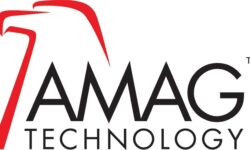Essen Essence: A Broader Life-Safety Perspective
Saying something is very European usually means it is provocative. Similarly, it is across the Atlantic where the adoption of new fire/life-safety technology is often swifter and more progressive than domestically. A recent venture abroad offers a glimpse into our industry’s larger scope.

Cooper Fulleon was among more than 1,000 companies exhibiting at Germany’s Essen 2012 extravaganza. Audible appliances shown at the expo produce a variety of sounds, including 500Hz, 725Hz, 825Hz, 1,200Hz and 1,500Hz.
This month I travel to the far reaches of the globe to bring you the latest fire and life-safety news from afar. During September, I attended a technical committee meeting for the protection of cultural resources in Venice, Italy. After spending a delightful week in Venice I travelled by train to Essen, Germany, to spend two days at the biannual Security Essen 2012 show before returning to the States.
The purpose of my visit was to see what technologies are being used in Western and Central Europe for both fire and security. I will limit this article, however, to some of the technologies that were specifically displayed for fire detection and suppression. If you ever get the chance to attend Security Essen, I would highly recommend it at least once during your industry career.
Wireless Detectors & Local Notification
In fire alarms, wireless detectors were front and center at the Essen tradeshow (for more particulars on this huge event, see sidebar). Manufacturers like Apollo, Bosch, Honeywell, Siemens and Hekatron were showing lines of wireless addressable detectors designed to work with their control units. While we in the States are just starting to move in this direction, this seems to be more of the norm for Europe. Whereas at ISC West in Las Vegas you will see several manufacturers displaying their hardwired products, there was only one showing hardwired devices in Essen. The wireless detectors displayed were ion, photoelectric, multicriteria, carbon monoxide (CO) and heat. NOTIFIER showed a line using low-powered mesh radio architecture.
Aspirating smoke detection systems were displayed by five different manufacturers at Essen. Wagner, which has not yet brought its product across the Atlantic, has a system that allows for the pinpointing of an area where smoke is coming from, similar to an addressable detector. This is done by timing the travel of the combustion particulates from the entry portal to the processor.
No Climb Products also displayed its Scorpion line that enables remote testing of aspirating smoke detection systems and hard-to-reach spot detectors. This allows testing to be conducted from a single location as opposed to an inspector having to go to each area within a protected premises where a system might be installed. The unit is installed at the time of the system installation. The manufacturer told me this product will be in the States in 2013.
I did not see a single conventional fire/life-safety system displayed; all of them were either addressable or analog/addressable. But unlike in the U.S., where the information from a protected premises gets transmitted to a supervising station, there was little mention of transmission technologies for signal transport. Being the show was held in Germany, perhaps the participants were more in-tune with that country’s requirements.
When I inquired, I learned that most systems in Germany are local only. The same is true in Italy, while France requires offsite supervision. I was hoping to see if they were having the same sort of discussions we are now regarding one form of communications (2G) being replaced with another (3G), but this was simply not the case. From a U.S. perspective, I found it interesting that with all of the advances of their controls and detection devices, signal transport was not widely covered at Essen.
Differences in Audible, Visual Alerting
For those who have traveled to Europe you may have noticed there are no notification appliances like we have here. This is mainly because the Americans With Disabilities Act (ADA) only pertains to the U.S. In Europe, fire alarm systems do have notification functionality, but it tends to be audible only. When used, strobes (or beacons as they are called) may be either clear or red.
The audible appliances shown at the exposition produce a variety of sounds, including 500Hz, 725Hz, 825Hz, 1,200Hz and 1,500Hz. Pfannenberg has appliances that may be programmed so the sound produced in the daytime has a higher sound pressure than that produced during evening hours. This is based on the assumption that the ambient sound level at a premise is less during evening hours.
A number of manufacturers, including Honeywell and Hochiki, presented emergency lighting systems, or integrated emergency lighting that could be connected directly to a building’s life-safety system. These systems can then provide directional guidance for exiting, based on which detection devices have been activated. This concept, while discussed within the States, has yet to be embraced. A number of manufacturers that provide systems stateside have this product in Europe.
It would take a change to our building and fire codes before such systems would start to appear here. The fear within the States is that directional guidance could lead a person to a fire, as opposed to away from it. This is a discussion that needs to continue because the risk, if any, of this occurring with fully addressable systems would not be that high.
If you enjoyed this article and want to receive more valuable industry content like this, click here to sign up for our FREE digital newsletters!

Security Is Our Business, Too
For professionals who recommend, buy and install all types of electronic security equipment, a free subscription to Commercial Integrator + Security Sales & Integration is like having a consultant on call. You’ll find an ideal balance of technology and business coverage, with installation tips and techniques for products and updates on how to add to your bottom line.
A FREE subscription to the top resource for security and integration industry will prove to be invaluable.








